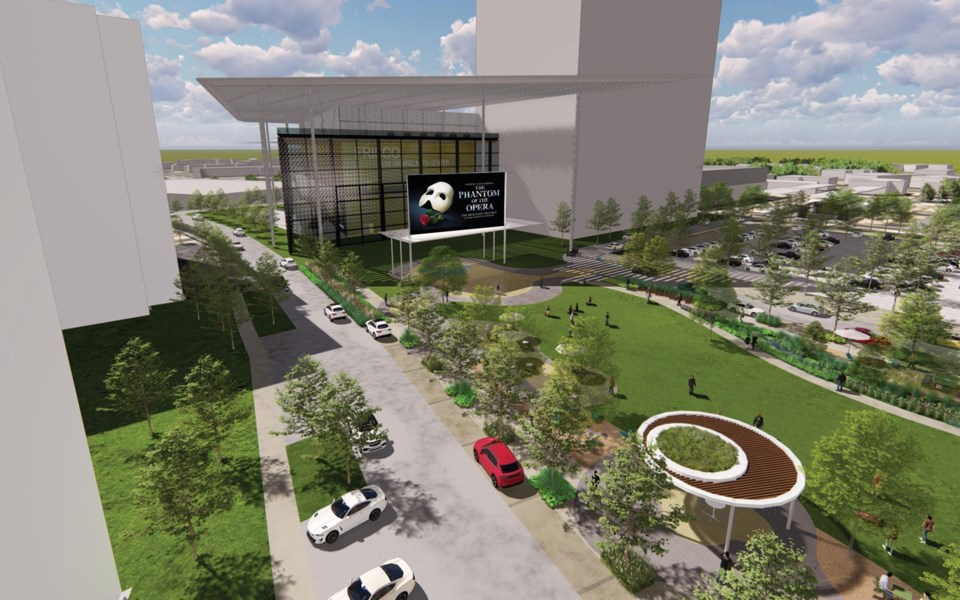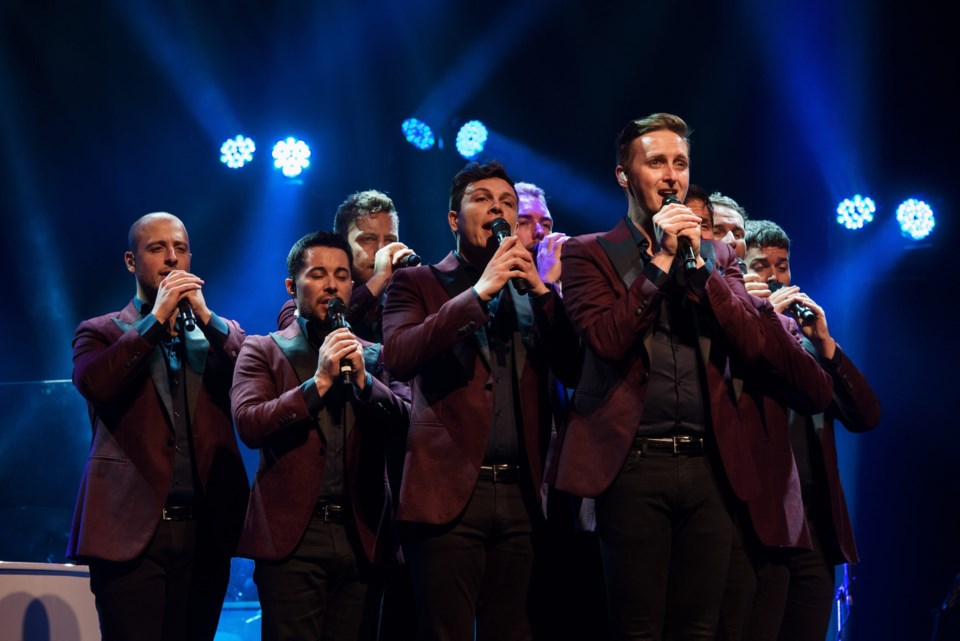Against a backdrop of football fields and Friday night lights — and amid a global health crisis — arts patrons and advocates have managed to rally support and keep the spigot open on the steady stream of funds needed to maintain and build performance venues and arts organizations across Collin County. Arts cheerleaders seem to have seized on the center of local culture and captured a bit of the zeitgeist. The arts are having their moment in Collin County.
As local performing arts grow and add a stitch to the cultural tapestry of the area, the economic benefits add up to billions — yes, billions — of dollars spent each year across North Texas restaurants and bars, hotels and motels, and shops. Business Council for the Arts Executive Director Katherine Wagner says individuals, families, businesses and communities all benefit from the arts organizations and centers that have sprouted across Collin County.
“You should support the arts because the arts support you,” Wagner says. “It is a gift to the next generations.”
It wasn’t too long ago the idea of watching a top-tier cast of Broadway performers on a stage in Collin County was a pipe dream at best. But thanks to years of exponential population growth, public-private partnerships and a bunch of hardworking volunteers, the dream is coming to fruition. Almost.

“I think government is becoming a lot more aware of the positive impact of arts and culture, both for placemaking and for quality of life. It is almost an hour to get to Dallas, so I think by these cities having something really distinct, it matters.”
There are a few catches: As dreams of Broadway keep getting bigger, so do the occupancy requirements of performing arts centers anxious to house them.
This conundrum is playing out at Hall Park in Frisco. After years of false starts and failed attempts to develop a large-scale arts venue, Frisco voters approved a proposal in June 2021 to designate $14 million in city bond funds and $43 million in Frisco ISD bond funds for a Hall Park performing arts center that could seat up to 1,500 people. The public funds will join developer Craig Hall’s $10 million private contribution. Hall, founder and chairman of Hall Group, sees the value in expanding Frisco’s art offerings.
“Art brings creativity and a sense of depth to our lives,” Hall says. “Beyond this, art is also economically beneficial as companies want to relocate to cities with thriving arts and cultural offerings, increasing its tax base.”
The HEARTS Project, which stands for Hall, Education, [and the] Arts, launched last year to raise an additional $100 million from private donations to be added to the $67 million in public and private funding already pledged for the Hall Park center.
The HEARTS Project website invites people to sign a petition to “bring Broadway to Frisco.” The petition argues that the proposed Hall Park arts center’s seating is inadequate. The petition cites a Theatre Projects’ study that found a venue with 1,750 to 2,000 seats was needed to secure Broadway tours.
Time will tell if the stars align for Broadway in Frisco.

That’s not to say there aren’t already plenty of arts venues in Collin County. Dance, music and theatre fans already have many options to see local and national talent on stages across town. Interest in and support for the arts is not new here.
For example, the Frisco Performing Arts Center has morphed over the past 20 years and now serves as an arts venue for concerts, camps and performances by area youth. The center features a 160-seat auditorium.
Or take the city of Richardson, for example. Now in its 61st year, the Richardson Symphony Orchestra is proof the arts have a rich history here. What’s more, Richardson’s Wildflower Festival and the Cottonwood Art Festival both return this May after taking a two-year pandemic break. The wildflower festival, which showcases local and national artists, has been held for more than 25 years. The Cottonwood Art Festival, which features artwork and music representing local and national talent has been held for nearly 50 years.
The Charles W. Eisemann Center for Performing Arts celebrates its 20th anniversary this year as Richardson's home for national performances as well as local youth dance troupes. The Plano Symphony Orchestra, which celebrates its 40th year in 2022, also performs at the Eisemann Center. The center stages performances in its 1,500-seat Hill Performance Hall and 395-seat black box theatre. Eisemann Center namesake Charles Eisemann, a self-described fan of Broadway musicals, acknowledges the financial obstacles posed by Broadway shows, which are “extremely expensive to produce.”
“To support [Broadway shows], you have to have a very big hall, bigger than the Eisemann Center,” he says. “There are just some financial obstacles to Broadway. And Broadway with a secondary cast is not Broadway to me.”
There are many balls in the air for the local arts, and there are a lot of outstretched hands competing for support that is, ultimately, limited.

“Art brings creativity and a sense of depth to our lives,” Hall says. “Beyond this, art is also economically beneficial as companies want to relocate to cities with thriving arts and cultural offerings, increasing its tax base.”
Richardson Assistant City Manager Shanna Sims-Bradish says that this year, the city will provide $220,000 in grants to 21 local nonprofit arts groups that will host at least one performance in town during the year. The arts grants were slightly smaller than in previous years — the city’s hospitality tax on hotel and motel occupants took a hit from reduced tourism during the pandemic — but a conscious effort was made to ensure the grants happened.
“A lot of arts organizations have shown their resilience throughout the pandemic, ”Sims-Bradish says.
“There is competition, but they are fighting for an audience that is busy and has lots of opportunities to do things. The advantage in North Texas is our growing population. We have such dynamic growth.”
Richardson’s symphony orchestra, an all-volunteer community band, and theatre programs, choral groups and a ballet company were among the groups that received arts funding from the city this year.
According to the most recent Arts and Economic Prosperity study, Richardson arts nonprofits and audiences generated $20.6 million in spending in 2015. Richardson is the only Collin County municipality named in the study conducted by the organization Americans for the Arts. The study reported $1.4 billion in spending by arts organizations and audiences in the Dallas-Fort Worth-Arlington metropolitan area, which includes Collin County. A new study will start collecting data later this year.
In Plano, the Robinson Fine Arts Center was supposed to open in January 2021 but was delayed due to concerns over cracks in the floor that city officials attributed to problems with the construction of the $67.5 million arts center. Funded through $64 million in bonds approved in 2016 by voters in the Plano ISD, the center is designed to be a top-tier home to performing and visual artwork created by Plano ISD students as well as professional artists.
When it does open, the Robinson Fine Arts Center will feature a 1,500-seat main stage, a smaller studio theatre, dance and rehearsal hall, and an art gallery.
Plano arts advocates have long worked to make the city and the region an arts destination, says Arts Centre of Plano Executive Director Suzy Jones.
“The good news is we each have our own community, and we would be crazy to try to compete with each other,” Jones says. “For me to compete with the symphony—why would I do that? I’m stronger when they are strong. The goal doesn’t change, for people to come to Plano to see the arts.”
Further north in McKinney, the McKinney Performing Arts Center is an example of the ways a community benefits through public investment in the arts. The historic building in McKinney town square, which was originally the Collin County Courthouse, fell into disrepair as the 20th century ended. In the mid-2000s, the town invested in a project to transform the building into an arts center.

“You should support the arts because the arts support you. It is a gift to the next generations.”
Now that center is surrounded by restaurants and boutique shops, and downtown McKinney bustles with life. From her perspective as head of the Business Council, Wagner praises the town’s decision to invest in the arts.
“It revived downtown McKinney,” Wagner says. “I think the government is becoming a lot more aware of the positive impact of arts and culture, both for placemaking and for quality of life. It is almost an hour to get to Dallas, so I think by these cities having something really distinct, it matters.”
Wagner applauds those in Collin County who aspire to build a venue that can accommodate Broadway shows, but she says there is already a lot to appreciate about the work done on local stages. Local performances may not always be at the level of the London Philharmonic, but they don’t need to be “really valuable” in their communities, Wagner says.
As new people and companies continue to arrive in Collin County, the opportunities continue to grow for increased diversity in artistic products and performances and in the potential for new leadership. This is certainly true at North Texas Performing Arts (NTPA) and at the Eisemann Center, where longtime leaders plan retirements this year.
NTPA began as the Plano Children’s Theatre and has grown into an organization that operates children’s theatre troupes in six communities across North Texas. Plano Children’s Theatre founder and NTPA Vice President Sara Akers recently announced plans
to retire.
At the Eisemann Center, Managing Director Bruce MacPherson will step down in September after 22 years at the center’s helm.
Eisemann says bright days are ahead. He says as great as MacPherson’s leadership has been for the center, “new eyes” can also bring great things for the future.
“Any time you have a change in leadership, there is an opportunity to take a look at things and say, ‘This is great, and it’s been wonderful. How can we make it better?’” Eisemann says. The answer is obvious: Get Broadway here.




